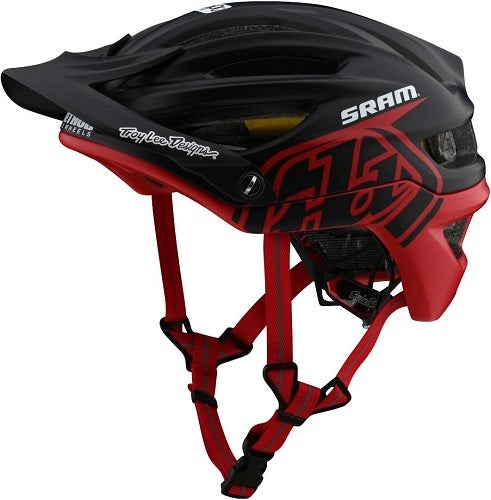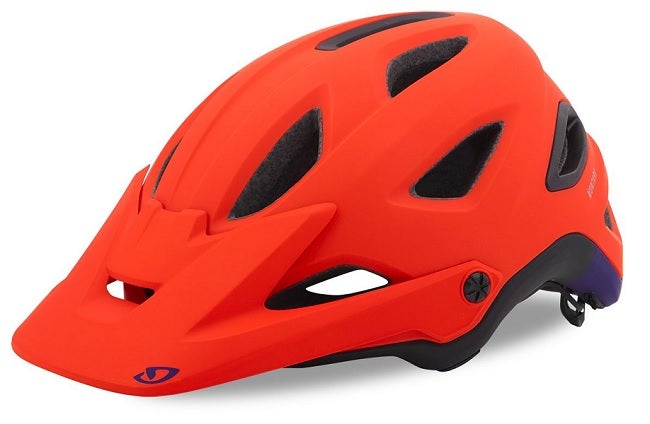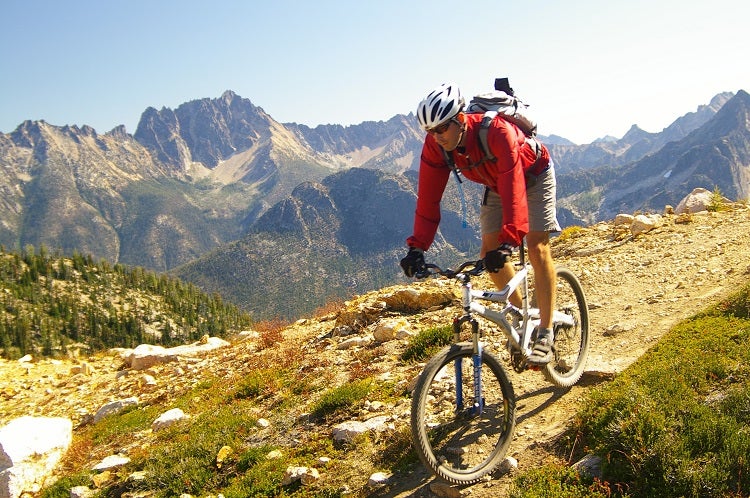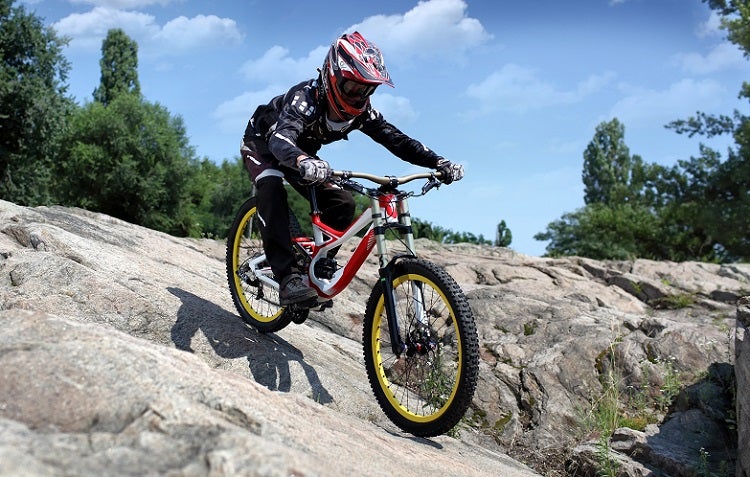
Our Editors independently research, test, and rate what we feel are the best products. We use affiliate links and may receive a small commission on purchases.
What are the best mountain bike helmets worthy of protecting your head? If your riding trails its only a matter of time before you crash and hit your head.
So make sure what you have on your head is going to protect it.
But what should you look for in a helmet? And what factors are most critical?
We took 12 of the most popular models and tested them for durability, protection, comfort, adjust-ability and ventilation.
Best Mountain Bike Helmets
For more of my MTB gear recommendations, have a look through these popular Outside Pursuits guide links: MTB shorts, MTB Shoes, Multi-Tools and Repair Stands.
Quick Answer: The 7 Best Rated MTB Helmets For 2021
- Troy Lee Designs A-2 Jet Helmet
- POC Tectal MTB Helmet
- Smith Optics Forefront Mountain Bike Helmet
- Giro Montaro MIPS Bike Helmet
- Bell Super 3R MTB Helmet
- Giro Chronicle MIPS MTB Helmet
- BELL Sixer MIPS Mountain Bike Helmet
Our reviews of the top rated MTB helmets with a comparison table and buyers guide below will help you choose a good MTB helmet for you.
Mountain Bike Helmet Reviews
#1 Troy Lee Designs Mountain Bike Helmet Review
- Shell: In-molded polycarbonate
- Impact Foam: EPP + EPS
- Ventilation: 16 vents
- MIPS: Yes
- Other: Adjustable goggle retention system
The Troy Lee Designs A2 Jet Helmet is a straight forward option that is designed for optimal protection of your head. The helmet has 16 air vents that move air into, over, and out of the helmet and the CoolMax pads will keep you dry – perfect for riding in hot and humid conditions.
The helmet has wide range of adustability, I was easily able to get a great fit by adjusting the simple cam-lock stabilizer. The shell of the helmet is constructed with an advanced smoot, polycarbonate, shell material.
This simple and effective design is for the mountain biker and cross country rider whose is looking for safety and functionality, instead of extra unwanted features.
Probably the first thing I noticed about the helmet was the design provides full protection of your head, because if it doesn’t do that, what good is it as a helmet?
The A-2 Helmet helmet also provides excellent protection for the back of your head, so if wipe out doing a back flip or just manage to hit the back of your head, you will have full protection.
Trying out the Troy Lee Designs Helmet at Purgatory Mountain:
The padding is minimal compared to other helmets in its class, but the strategic placement and easy adjustability of the pads makes this a non-issue.
As is the case with most helmets we tested, they tend to run tight, so when you measure your head and if your on the borderline of a size, go up to the next size.
The helmet felt a little odd compared to other helmets we tested because of the thinner padding but you will come to appreciate the stream lined feel.
Its price point places it square in middle of the pack compared to other helmets tested. In my opinion it is the best mountain bike helmet for the money.
It is light weight, well ventilated – maintaining the highest quality and protection with MIPS. The Troy Lee Designs is our Editors Choice for the best mtb helmet.
#2 POC Tectal MTB Helmet Review
- Shell: Unibody In-molded polycarbonate
- Impact Foam: EPS
- Ventilation: 14 large vents
- MIPS: No
- Other: Adjustable visor
If you’re ready to head out on the trails but you need a new helmet, I would seriously look at the POC Tectal helmet. Once you pick it up you will see the quality construction that went into it.
The solid unibody construction of the Tectal gives you serious protection in the event of a head impact. And you know it’s a question of when, not if!

The Tectal has a unique “Aramid” grid that you’re paying a little extra for. The Armid grid is able to absorb and dissipate the forces of an impact reducing forces on your skull to prevent injury.
The helmet has large openings for ventilation that was designed in a wind tunnel to optimize the size and placement.
It features an adjustable visor for sun protection and a goggle on the back if you choose wear them. The 4 point harness system keeps the helmet firmly on your head and is fully adjustable to get the perfect fit.
Video: Overview of the POC Tectal and Tecal Race MTB Helmets.
The helmet comes down on the back of your head further than most helmets giving you superior protection where you most need it and most likely to hit your head.
The liner is comfortable and has wicking properties to keep your head cool and dry.
The POC Tectal provides superior protection and is one of the best MTB helmets you can get. And since it’s your head you’re protecting, isn’t it worth it?
#3 Smith Optics Forefront 2 Mountain Bike Helmet Review
- Shell: Koroyd Aerocore
- Impact Foam: Extruded co-polymer tubes
- Ventilation: AirEvac system
- MIPS: Available
- Other: Adjustable visor
When I think of Smith Optics the first thing that comes to mind is their ski goggles BUT their helmets are definitely worth a look. The Forefront MTB helmet was designed from the ground up for superior protection of your head!
It has an In-Mold construction of “Koroyd tubes” that are made from a co-polymer that not only looks bad-ass, like something out of Start Wars but it protects your head better than a typical EPS foam helmet.
And it’s not just looks and protection, it also gives you lighter weight AND its cooler because the hollow construction of the co-polymer tubes allows significantly better airflow through the helmet. This keeps you cooler when the temperature starts rising.
The fitting system will give you unmatched fit and comfort and the 4-point harness keeps it securely on your head if you crash.

What I really like other than the protection and looks is it has a pre-installed mounting bracket for a bike headlight (click here for my reviews of bike lights) or a GoPro to record your ride.
The co-polymer construction gives the helmet the lightest weight of any tested, 11 ozs! You barely notice it on your head. It has large vents to allow good airflow and a goggle retention strap but also works fine if you just wear sunglasses.
#4 Giro Montaro MIPS Bike Helmet Review
- Shell: Fusion In-Mold Polycarbonate
- Impact Foam: EPS foam
- Ventilation: 16 vents
- MIPS: Yes
- Other: Adjustable visor
There is a lot to like about the Giro Montaro MTB helmet. The more I learn about MIPS (Multi-directional Impact Protection System) the more I like it and is one of the reasons the Montaro is on my list.
If your not familiar with MIPS, in a nutshell it helps protect against head injury in a crash by reducing your head rotation. You can read all about the technology by click the link above.
Knock on wood, I haven’t had any major crashes so I cant say if it helps but since I value my head, to me the slight extra cost is worth it.
You can get an idea of how the inner liner can rotate independently from the outer shell reducing the rotational forces on your head in a crash.
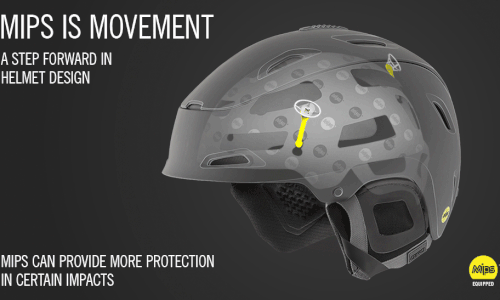
While MIPS is a good reason to get the Montaro, (along with the Smith Optics), it’s by far the only reason. The Montaro is also one of the most comfortable MTB helmets on the market.
The Montaro’s light weight is one of the main reasons. After you start riding you will forget its on your head, which is the best test for a helmets comfort level.
The lining has an anti-microbial pads made with silver that prevents the growth of odor causing bacteria. Nice! Not only that it has wicking properties that absorb your sweat and keep you cooler at the same time.
The Montaro like most of the helmets uses the “Roc Loc 5” fitting and adjustment system.
I will tell you it really works, with a turn of the wheel you can get the perfect fit, unless you have a very odd shaped head…
The visor is a pretty big and gives you sun protection and gives you a large range of adjustment plus is easily removes if you don’t want it on by two thumbscrews.

One of the better features of the Montaro and Giro helmets in general is the ventilation. The helmets vents are very effective at getting air to flow into the helmet keeping your head cooler and drier than most other helmets.
The Montaro also has built in camera mount so you can record your thrills and hopefully not too many spills. The mount is not as good as I would have liked, but it does the job.
The polycarbonate shell is durable and resists dents and scratches well. It fully covers the foam padding protecting it when the help gets tossed around or you set it down on a rough surface.
The Montaro has a lot going for it, not the least of which is the MIPS head protection and the best MTB helmet under $200.
# 5 Bell Super 3R MIPS Adult MTB Bike Helmet Review
- Shell: Fusion In-Mold Polycarbonate
- Impact Foam: X-Static® Padding
- Ventilation: 23 helmet, 4 brow ports, 6 chin-bar
- MIPS: Yes
- Other: Wraparound Protection with a removable chin bar
The Bell Super 3R Helmet is a full face, feature packed helmet to keep your head protected on the trails and give you confidence go all out knowing your melon will not get hurt.
The helmet is comprised of a Fusion In-Mold Polycarbonate Shell with internal reinforcement – this helmet packs in all the safety features you will ever need, while going above and beyond minimum safety standards.
The Bell Super 3R MTB helmet is a versatile helmet for both recreational rides and extreme trail riding. Its unlike the other helmets tested, it features a modular construction so you can take the chin guard off when not needed, making it two helmets in one.
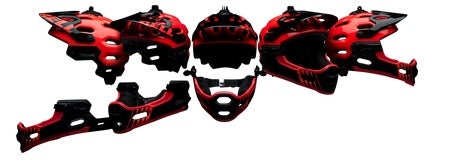
You really get the best of both worlds, a great open face helmet AND the best full face mountain bike helmet. The helmet provides full coverage, is well ventilated, has an open visual field, and accommodates any size protective goggles.
The wheel adjustment system gives you a custom fit and the option to add in a ‘Go Pro’ camera is a nice added bonus for catching your best rides (or crashes) on video.
Whether you are a pro or just want to ‘look like a pro’—this helmet will do the trick. The Bell Super 3R Helmet is well worth the money and is packed with added features that make it one of the best full face MTB helmets on the market.
Video: Check out how the Bell Super protects your head.
One thing to keep in mind is it tends to run a little small to size so if you are borderline in a size, go up to the next size. If you are into more extreme riding then the Bell Super 3R Helmet is your best bet.
#6 Giro Chronicle MIPS MTB Helmet Review
- Shell: In-Mold Polycarbonate
- Impact Foam: EPS foam
- Ventilation: 14 vents with internal channeling
- MIPS: Yes
- Other: Adjustable visor
The Giro Chronicle Mountain Bike Helmet is the perfect blend of protection and performance and is ideal for trail riding in rough terrain.
You will love Giro’s updated shape that provides more coverage than most other mountain bike helmets.
The helmet has fourteen vents that provide upward air flow, pushing heat up and out of the helmet— preventing heat exhaustion on a hot summer day.
The In-Form fit system provides maximum stability adjustment, while the adjustable moto-style visor offers additional protection for the eyes.
Giro is well known for making excellent helmets and this model is no exception. The adjustable visor is a nice feature of the helmet keeping the sun out of your eyes.

The wrap around design hugs your head comfortably and not only looks good but provides full protection for your head with MIPS protection.
Like any helmet, make sure you take careful measurements of your head before ordering to get the correct size.
This is a solid helmet with its best features being the 14 effective cooling vents, the light weight design, and the comfortable, secure fit.
In my opinion the Giro Feature helmet is the best MTB helmet under $100 and is one of my top picks for a mountain bike helmet.
#7 BELL Sixer MIPS Mountain Bike Helmet Review
- Shell: Polycarbonate shell
- Impact Foam: EPS foam
- Ventilation: 20 vents
- MIPS: Yes
- Other: Deep rear profile
Bell Sixer is basically the little brother to the Bell Super with the difference mainly that is not a full face helmet. I like that the liner has silver fibers that inhibits the growth of bacteria so it doesn’t get stinky.
It’s one of the heavier helmets out there, but that’s due to the extra polystyrene foam inside the helmet, it’s definitely thicker than many other helmets. I would assume it gives you an extra measure of protection because of it plus it has MIPS protection,
Spending a lot of time in FL, ventilation is important to me. The Sixer has 20 large vents that provide excellent airflow.
The visor has 4 positions for adjustment or you can remove it completely by just unsnapping it. The breakaway helmet mount is perfect for recording your rides and jumps.
The helmet is very durable with a polycarbonate shell that can take lots abuse, which being a mountain bike helmet it inevitably will. The Sixer comes down far over the back of your head offering full coverage and protection.
Overall the Sixer is a excellent helmet at a reasonable price.
Mountain Bike Helmet Comparison Table
| MTB Helmet | Shell | Ventilation | Features | MIPS | |
|---|---|---|---|---|---|
| Troy Lee Designs A-2 Helmet | Polycarbonate Impact Shell shell in-molded with EPP + EPS liner | 16 distinct vents with internal channeling | Triple position adjustable retention system | Available | |
| POC Tectal MTB Helmet | Fusion In-Mold Polycarbonate Shell with with EPS liner | 15 large channeled vents | Aramid fiber grid for extra protection | No | |
| Smith Optics Forefront Helmet | In-mold Koroyd tube co-polymer construction | 12 vents with internal channeling | Integrated Camera & Light Mount | Yes | |
| Giro Montaro MIPS Helmet | In-mold polycarbonate shell with EPS liner | 16 vents with internal channeling | Roc Loc Air provides ventilation and fit | Yes | |
| Bell Super 3R MTB Helmet | Fusion In-Mold Polycarbonate Shell | Overbrow Ventilation with large vents | Removable chin-bar | Yes | |
| Giro Chronicle MTB Helmet | In-mold polycarbonate shell construction with EPS liner | 14 vents with internal channeling | Adjustable moto-style visor, Roc Loc 5 fit | Yes | |
| BELL Sixer MIPS Mountain Bike Helmet | Polycarbonate shell construction with EPS liner | 20 large vents | 4 Position adjustable visor | Yes |
How to Choose the Best Mountain Bike Helmet
- What to Look For
- Comfort
- Weight
- Safety First
- Finding the Right Fit
- Best MTB Helmet Brands
- FAQ MTB Helmets
- Final Thoughts
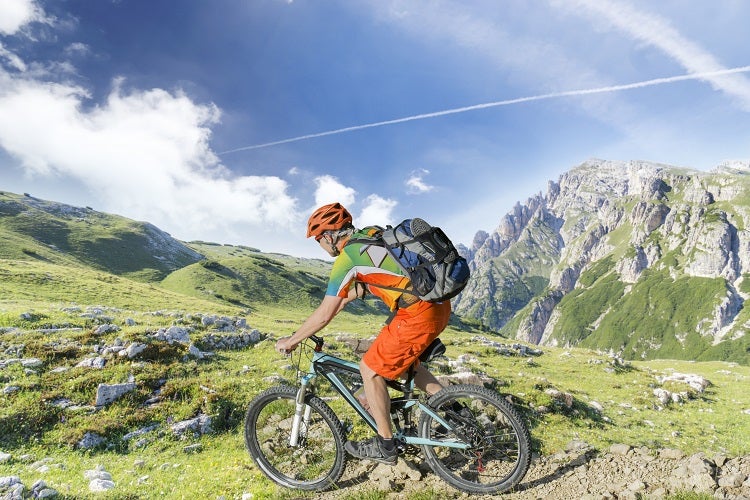
Mountain bike helmets are specialized helmets that are designed to protect the rider’s head from a major crash. They are well ventilated even at low speeds, and are often built with visors to protect riders from mud, rain, and sun.
The better helmets provide rear-head coverage, and some provide full face protection with a wraparound chin bar. These helmets are ideal for downhill mountain biking and park riding. Here are some things to think about when selecting a mountain bike helmet.
What to Look for in an MTB Helmet
There are two styles of mountain bike helmets to consider; the first is the open face design. An open face model resembles a traditional road bike helmet and is typically lightweight, aerodynamic, well-ventilated and provides coverage to the side and back of the head.
Similar to road bike helmets, mountain bike helmets are made with an inner EPS liner, molded or glued to a hard outer plastic shell. Open face helmets are great for versatile riding styles because they can be used for road biking as well.
Full face options are ideal for downhill mountain bike riding or other high speed riding where the risk of injury is increased. Full face styles provide full protection around the head, while shielding the chin, jaw, and cheeks, as well.
These models are heavier than open face designs, though they are made of light, high-tech materials such as carbon fiber.
Due to their intricate design, full face helmets are typically more expensive, however, they provide the option of customizing your helmet to include additional safety features, such as neck braces.
Comfort
Comfort is certainly up there on the list of important characteristics of a MTB helmet. If its not comfortable you may skip wearing it. The helmet should be snug but not so tight as to be uncomfortable. The helmet should move very little when you try and rotate it.
Sizes for helmets are pretty general and usually only available in small, medium and large. Sometimes there is an extra large size. Cheaper brands may only offer one size, these should be avoided.
Weight
Most bike helmets are very lightweight and typically made of an EPS or Expanded Polystyrene covered with an outer shell. Better quality MTB helmets typically have two layers bonded together.
Helmets with this design are usually lighter and stronger and of course more expensive.
Cheaper helmets glue or tape the outer plastic shell to the inner foam liner. This design will typically fall apart after a short period of time, especially in hot weather.
Safety
All mountain bike helmets must meet the American Society for Testing and Materials, Snell, and/or U.S. Consumer Product Safety Commission safety requirements, regardless of the designs, features, or price range.
This allows you to focus on which type of helmet to purchase based on your individual riding needs, as oppose to attempting to discern whether or not the helmet is a generally safe choice.
For example, a full face helmet provides more overall protection, but it is not the best option for an individual who wants to ride cross country, or on a single track, due to the limited visibility.
Likewise, an open face option is not ideal for someone participating in extreme sports because the lack of coverage and increased risk of injury require a more comprehensive design.
Finding the Right Fit
The most important factor when choosing your mountain bike helmet should be selecting a model that has a secure fit. The helmet should be snug, but not too tight, and should sit about an inch above your eyebrows.
There should also be enough wiggle room on the side to wear goggles or sunglasses as well. If possible, try on your favorite pair of sunglasses with the helmet you are considering, to make sure they are a good fit.
No area of the helmet should be painfully tight, and any area that does not make secure contact with the skull should be supplemented with additional pads or liners.
Most sizes are general and include small, medium, and large options. To determine which size is best for you, measure around the head just above the eyebrows.
Record the measurement in inches or centimeters and look for the size range in which your measurement falls.
Best Mountain Bike Helmet Brands

While the “best” brands is of course subjective and there are a lot of companies making quality helmets, these names usually come up on most peoples list of the best brands of helmets:
Giro: They focus on making quality helmets for most outdoor activities. My first Giro product was the Seam helmet. It is by far the best ski helmet out there. Their bike helmets are second to none. The new Montaro helmet with MIPS technology is worth your consideration.
Fox Racing: Best known for their protective racing apparel, they have gotten into MTB helmets. Based on Irvine California by people who race on weekends they make some excellent products.
POC: Based in Stockholm Sweden, they got their start making ski equipment like goggles and helmets. They have since expanded their lineup to mountain bike protective gear.
Bell: Founded in the 1950’s is one of the best known names in helmets. Originally founded making helmets for car racing they have expanded into biking, motorcycles. When you buy a Bell product you can be assured you are buying a quality product.
Troy Lee Designs: small company the focuses exclusively on making mountain biking gear. Having been around for over 30 years, I think its safe to say they know what they are doing and the A1 helmet is one of the best on the market.
FAQ for Mountain Bike Helmets
Q: What is the best helmet?
A: The most important factors for the best helmet are fit and protection. The best helmet will be of little help if the helmet is loose and doesn’t fit your head correctly. Most modern helmets offer good protection although there are a few stand out brands.
Q: What is the Coolest Helmet?
A: By cool, I mean best ventilated. The coolest helmets usually have the biggest vent openings to allow airflow. Although vent size is not everything, the design of the vents is critical as well. Troy Lee Designs is one of the best for ventilation.
Q: Should I buy a “cheap” helmet?
A: All helmets being sold in the US have to meet certain guidelines so they all provide a good measure of protection and of course better than nothing at all.
But just because they meet CPSC guidelines doesn’t mean you can’t do better. The new MIPS technology is not cheap but its your head so buying a “cheap” helmet is not a good idea in my opinion.
Q: How do I know I am getting a good fit?
A: The helmet should fit low on your head protecting your forehead while still covering the back of your head. These are the two most important areas where you are most likely to hit the ground.
The helmet should be snug and not move when you try to rotate it, while not to tight so as to be uncomfortable. The straps should fit under your chin snugly but obviously not choking you.
A 4-point harness system is best holding the helmet securely on your head in the event of a crash.
Q: When should I replace my helmet?
A: When you crash and hit your head, you MUST replace the helmet. Even though it may look fine on the outside, the foam inside the helmet is one time use.
It crushes and compacts in to absorb the impact to your head. If you are in doubt, you can probably send it back to the manufacturer for inspection. If it’s an expensive helmet and you’re in doubt, it’s probably your best bet. Better to be cautious, it is your head after all!
Final Thoughts
Overall, when looking for the best mountain biking helmet it is essential to assess what type of riding you will be doing – recreational or extreme adventure. This will influence what type of added features to look for in a helmet.
Always remember that safety comes first—and finding the right fit and style for your needs can save your life. While some models are equipped with additional features and intricate designs.
All helmets are certified to provide full protection in the event of an accident. Taking the time to find the right fit and style for your needs is the best decision you can make.
I hope this guide was helpful for finding the best mountain bike helmet to fit your needs. If you want to comment or recommend a helmet I didn’t include, please use my contact form to get in touch.
Have fun and enjoy the ride!
Need a bike rack to take your bike to the trails? Ride at night? If so see my bike headlight reviews. Need a quality road bike helmet, see my guide to the best road bike helmets. No matter your riding, you should have a good hydration pack, here are my recommended ones.
How We Researched
To come up with the top mountain biking helmets, we researched a variety of sources for reviews such as Competitivecyclist, JensenUSA, REI, EVO along with our own personal experience.
We also consulted online magazines for product research and reviews to get as much unbiased information as we could. To help weed out fake reviews we used Fakespot.com to make sure we only looked at genuine reviews.
With so much quality gear available, we had to narrow it down based on what we felt were the best options for the price. The author, Richard Remick, has decades of experience of mountain biking and is eager to share his knowledge with readers.
To help narrow down the selection we used personal experiences along with recommendations from fellow MTB bikers, bloggers and bike shops.
After extensive research, we came up with our list to help you choose the right one for you.

